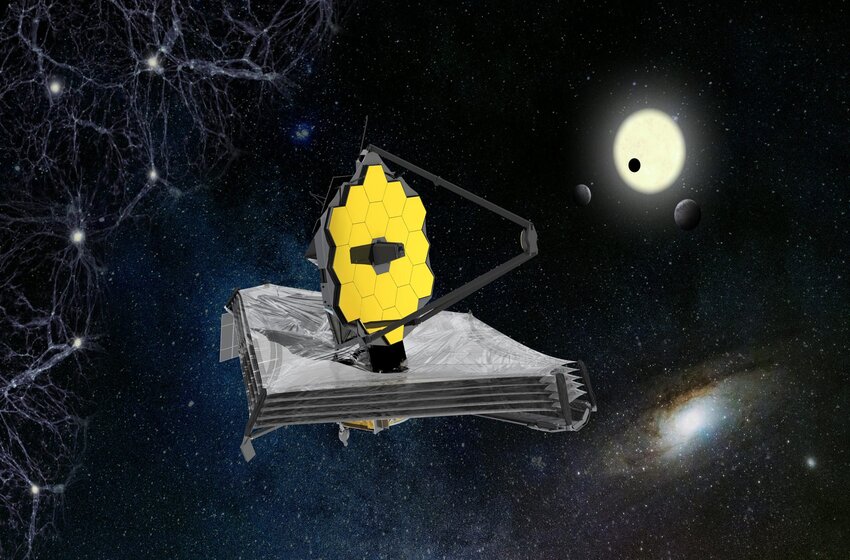
James Webb Space Telescope: Why Is It So Important?
- Technology New Innovation & Researches
 Sophia Silva
Sophia Silva- January 14, 2022
- 1
- 6 minutes read
The James Webb Space Telescope from NASA which is the successor of the agency’s popular Hubble telescope, launched on December 25, 2021, with the aim to study the earliest stars and peers back more into the past of the universe than ever before.
Presently, Webb is on a 29-day trip to its attentive spot, Lagrange point 2 (L2), close to 1 million miles (1.6 million km). It is the biggest and most powerful space telescope that has ever been launched. This is the James Webb Telescope launch location.
James Webb Space Telescope: Mirror alignment Process Starts
NASA has affirmed that the team working behind the James Webb Space Telescope has started the process of aligning the mirrors, which were stashed for launch. The preparatory adjustments will take nearly 10 days, as per a mission timeline, even though NASA anticipates spending nearly three months to fully align the panels into an operating telescope.
Mission control engineers at Goddard Space Flight Center of NASA in Greenbelt, Maryland, started by sending their primary commands to tiny motors known as actuators that steadily position and fine-tune the principal mirror of the telescope.
#NASAWebb’s mirrors are warming up their moves! 💃🏾
— NASA Webb Telescope (@NASAWebb) January 12, 2022
Its 18 primary mirror segments have motors to align them to perform as one big mirror. Today we confirmed that all motors (including those on Webb's other mirrors) are in working order: https://t.co/5YkYMn0FlL #UnfoldTheUniverse pic.twitter.com/G821WqTuii
Comprising 18 hexagonal segments of gold-plated beryllium metal, the initial mirror measures 21 feet 4 inches (6.5 m) in diameter which is a much larger light assembling surface compared to the predecessor of Webb, which is the 30-year-old Hubble Space Telescope.
The 18 segments that have been together folded to adjust inside the cargo bay of the rocket that transported the Webb to space, were fanned out with its remaining structural elements during a time span of two weeks following the launch of Webb on December 25 last year.
Those sectors must presently be detached fasteners that kept them in place for the event of launch and then shifted half an inch from its real configuration which is a 10 day process before all these can be lined up to create a single, untampered, light assembling surface.
This line will require an added three months as stated by Lee Feinberg who is the optical telescope element manager of Webb at Goddard. Lining up the initial mirror segment to create one big mirror implies each segment as stated by Feinberg,
“is aligned to one-five-thousandth the thickness of a human hair. All of this required us to invent things that had never been done before.”
The smaller mirror of the Webb Telescope is formulated to direct light that is collected from the primary lens into the camera and other instruments of the Webb. They must also be lined up to function as a part of a cohesive optical system. If everything occurs as per the planning, this telescope should be prepared to capture its initial science image in May, which would then be processed over nearly another month before its release to the public.
This $9 billion telescope is illustrated by NASA as a premier space science observatory of the upcoming decade, will primarily see the cosmos in the infrared scope, enabling it to gaze via clouds of dust and gas where the stars are born. Hubble had primarily functioned at ultraviolet and optical wavelengths. So when there is a comparison between James Webb Space Telescope vs Hubble, Webb is the ultimate winner.
Conclusion
The James Webb Space Telescope is nearly 100 times more powerful compared to Hubble, allowing it to view objects at higher distances, thus further back in time, compared to Hubble or any other telescope for that matter. Astronomers assert that this will bring into observation a glimpse of the cosmos that was never seen.


1 Comment
Excellent website. Lots of useful information here. I am sending it to several friends and also sharing in delicious. And naturally, thanks for your sweat!